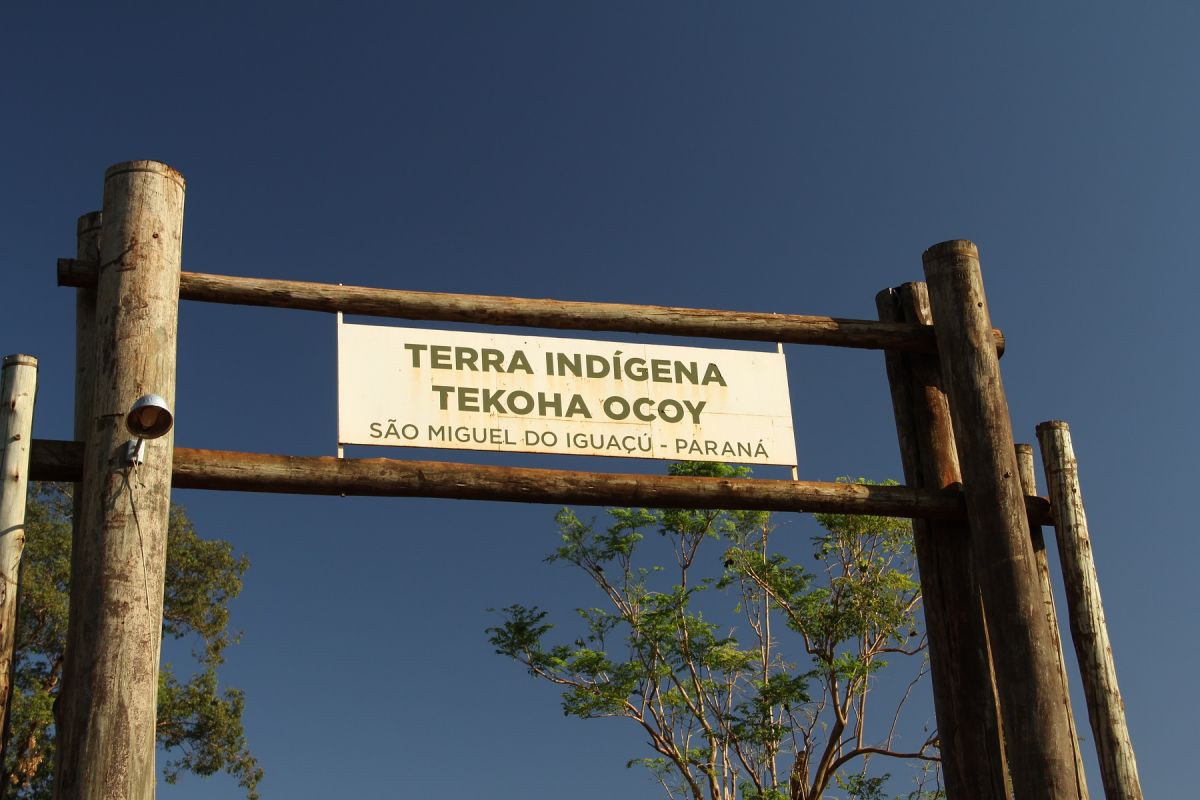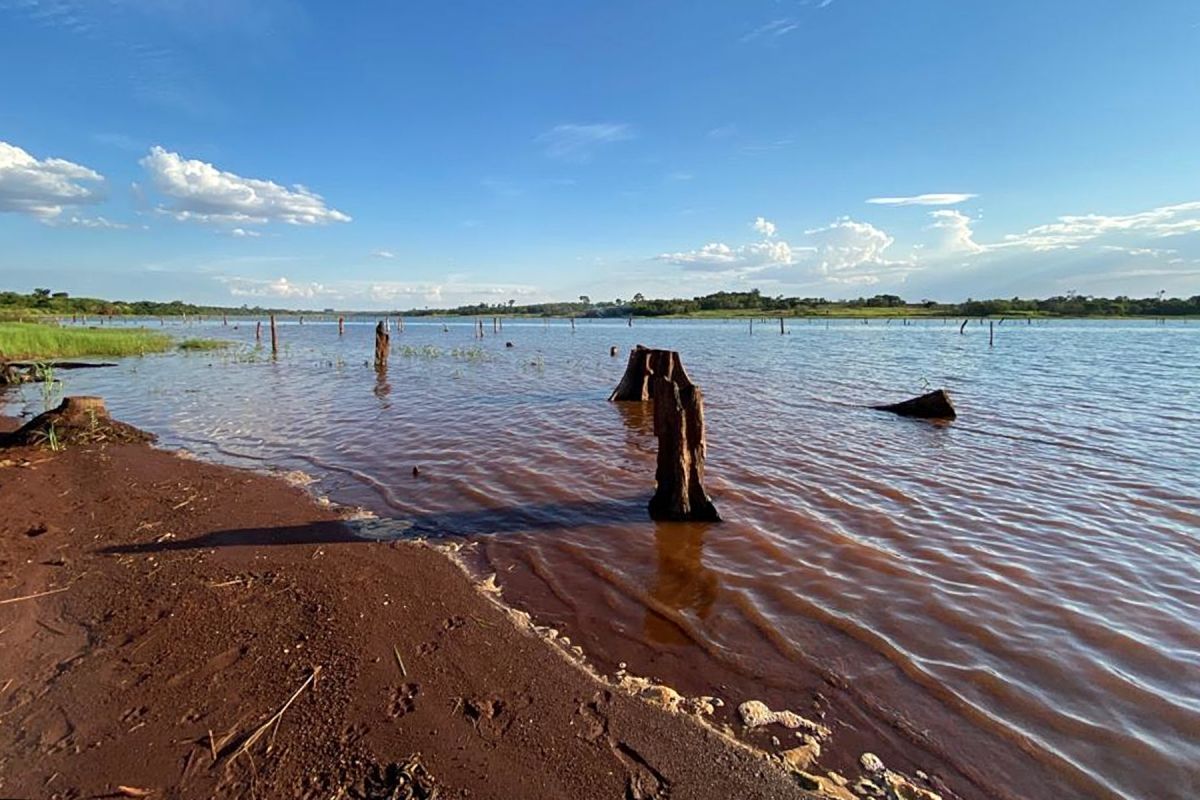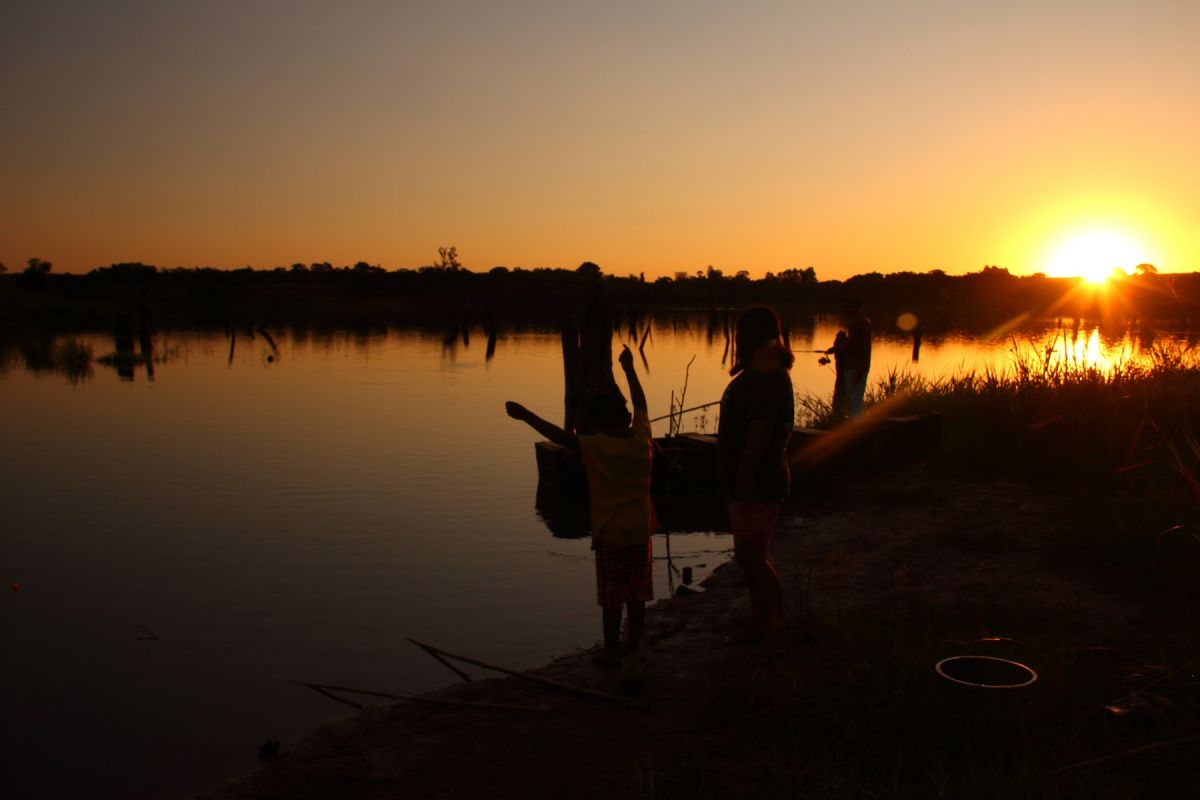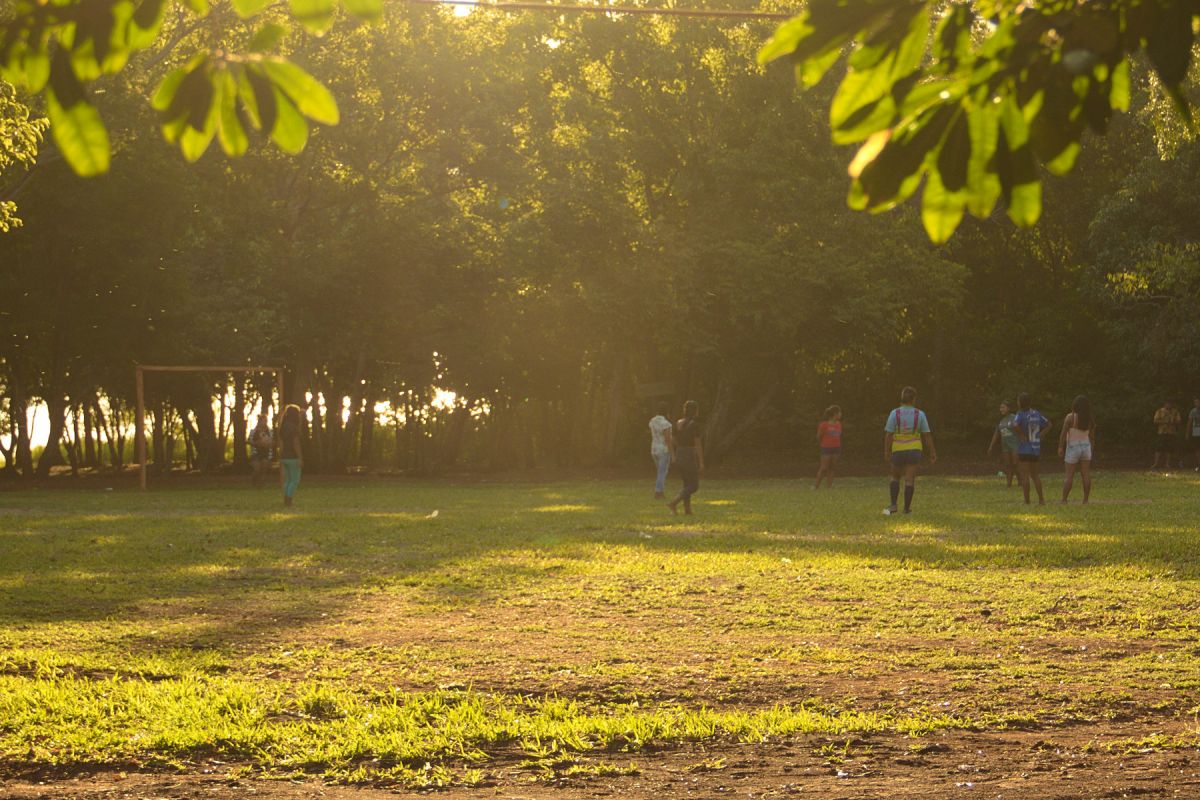Traveling around Europe I have always had the impression that meeting different people and cultures was an exciting experience. When I came to Brazil, leaving Europe for the first time, I was astonished to see with my own eyes landscapes, plants, and animals I’ve only seen in the movies. But what left me most amazed was meeting the Guarani in Tekoha Ocoy, an indigenous land in São Miguel do Iguaçu. Guarani are indigenous people living across Argentina, Brazil, Paraguay, Uruguay, and Bolivia. During the colonization of South America, Guarani had been victims of slave hunters for a long time, and as happened with other indios (a term they consider offensive), their history and culture weren’t taken into account when modern nations were founded. This left Guarani people split across many nations in Latin America, including Brazil.
Casemiro, one of the elders in Ocoy, explained to us what all this meant to his people. We sat with him and watched while he was drawing the map of Guarani territory in relation with the borders of the officially recognized nations. To Casemiro, as well as to many others, these borders are meaningless: as Guarani are one people, there should be no border between them.
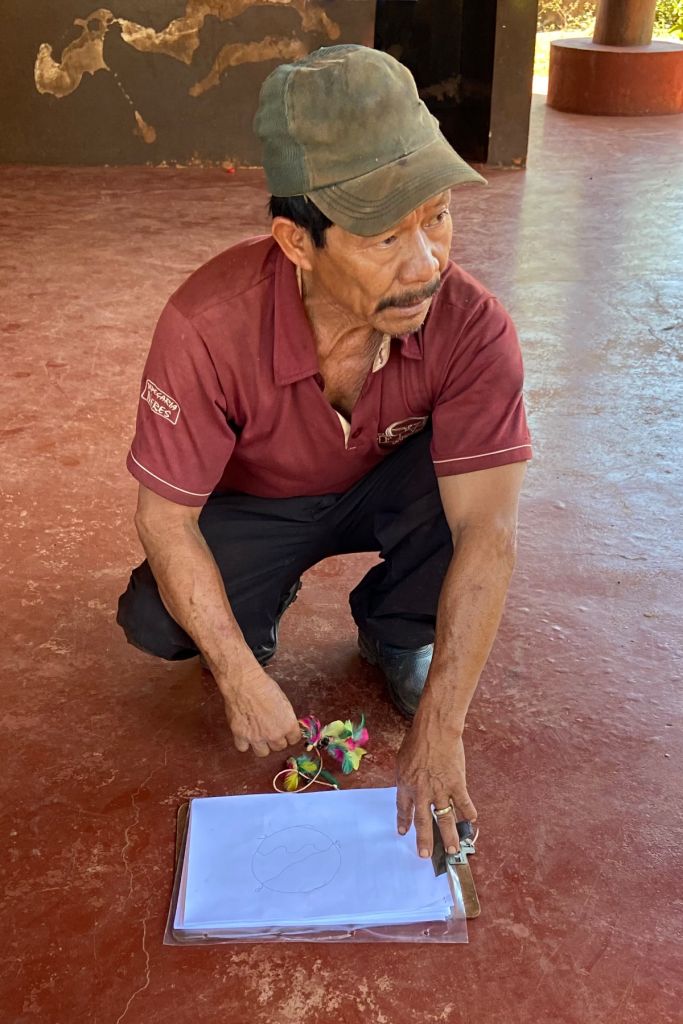
TEKOHA IS THE ENVIRONMENT, THE LAND WHERE A GUARANI COMMUNITY LIVES.
As if nations borders weren’t enough, The Guarani community in Ocoy was also suffering from land deprivation in the last decades, like many other aldeias (villages): besides the continuous growth of fields occupied by the industrial agriculture, the Ocoy community had seen its land flooded by water, as in 1982 the construction of the Itaipu dam created the enormous Lake Iguaçu, an artificial lake used to feed one of the largest hydroelectric power plants in the world. Looking at the lake from the shore, we could see the stomps of the trees emerging from the water, as a memorial of the rainforest that used to be there.
Despite all the difficulties they had to suffer, the people in Tekoha Ocoy didn’t abandon their land: nowadays, around 800 people live in a stripe of land between the water and the industrial agriculture fields. Some of them work inside the community mainly in agriculture or as artisans, while others work for cooperatives outside the community, but almost all of them always choose to stay and live in Tekoha Ocoy. Even those who decide to study at the university (Ocoy only has one school inside, serving students up to high school) usually want to return to their homeland when they finish their studies.
Even though Tekoha Ocoy accepts tourists and has artisanal production, agriculture is still the main source of income for most of its inhabitants. As Silvano, Ocoy’s cacique (if you don’t know what cacique means, check our Instagram and Facebook profiles, we are publishing some pills of Guarani language) explained to us, expanding both the agricultural and artisanal production would be important so that every family has a stable source of income. By the way, while we were in Ocoy, we could see people fishing: if it doesn’t sound exactly like something so special or unexpected, well, you should know that they also fish piranhas!
It’s impressive to see a couple of these scary fishes snapping their jaws right in front of you, but once cooked they are definitely less aggressive and tastier. The last thing we saw in Ocoy was their opy’i (house of prayer): Celso told us how it was built and the meaning of all the different instruments and objects placed in it. Unfortunately, we didn’t have the time to stay there and participate in the evening prayer, but we’ll go deeper into the topic with a video we shot in Monjolinho, another Guarani community we are visiting; the video is going to be ready in a few days, so stay updated following our social media!



